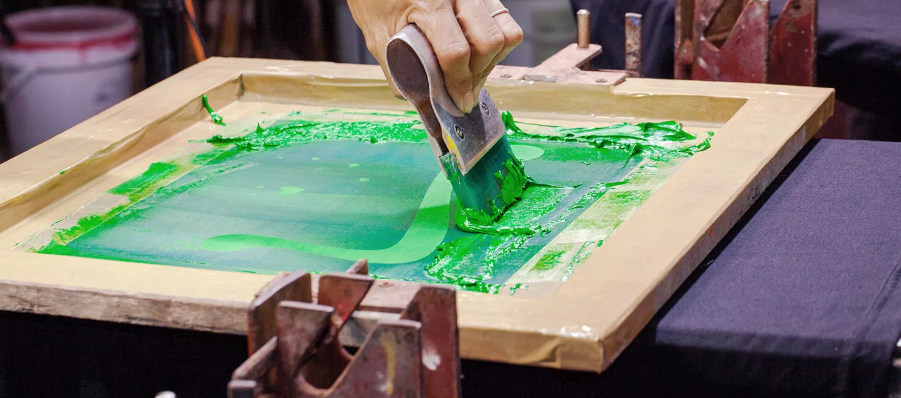Top 5 Types of Screen-Printing Techniques
- Screenprint direct
- Aug 11, 2023
- 3 min read

Screen printing, alternatively referred to as silk screen printing. It is a beautiful way of making striking artwork. It's an incredible method for embracing enchanting and appealing prints on various materials such as plastic, textiles, and paper.
In today's world, where the pursuit of eco-friendly practices and sustainability is paramount, many businesses actively engage in endeavors that not only enchant but also contribute to a more enduring and environmentally conscious approach.
Let's dive deep into this post and explore some screen printing techniques and how it processes eco-friendly printing.
Screen Printing Techniques:
Below are some screen-printing techniques for creating incredible artwork:
•Spot color screen printing- Spot color inks are used for screen printing only; these are also called the screen printer's best friend. It is the most ordinary print technique in the industry in which individual colors are printed using a screen plate in a single pass.
•Halftone printing- It is a standard method used worldwide to achieve various shades of gray or color by varying the size and spacing of the dots. Halftone printing is widely used in newspapers, magazines, and other printed materials to create realistic and detailed images.
•Gray scale printing- In the era of commercial painting, the grayscale printing technique is used for creating photographs by using varying amounts of black ink to create different shades of grey. In contrast to color printing, grayscale printing only uses black ink to create an image.
• Duotone printing- It is another name for multi-tone printing; it is done using three or four inks. This process requires the press to be set up with special inks, so primarily Pantone-assigned colors are reliable for duotone printing.
•CMYK 4-Color printing- This printing technique uses cyan, magenta, yellow, and black as their primary colors. If you are seeking color printing methods, you can go ahead with this printing technique at reasonable prices.
Eco-friendly screen printing
For accomplishing screen printing tasks by following eco friendly printing practices, two things are vital that you should use-
• Ecofriendly screen printing techniques
• Eco-friendly screen-printing supplies
Ecofriendly Screen-Printing Techniques
Use a Limited Amount of Water: You can use a spray bottle for the developing process instead of using abundant water. Use the spray bottle and sprinkle water timely. This will help the stencil to initiate the development process by softening the emulsion. You can also use a dip tank, as you will be using the same water each time you go to develop a screen.
Reuse or Recycle: Despite gathering your film positives in a corner, use them to cover up your tears. You can reuse them instead of using a lot of cover tapes. If you don't like reusing them, film positives can be recycled.
Prohibit the Use of Single-Use Ink Scrapper: You create more filth when you use a single-service scrapper. Swap to a scraper that can be washed or used again.
Use all Misprint Residues: If you have received a shipment of t-shirts that is torn or has tiny holes in them, or ink has been spelled over the t-shirt, you can use the residues as shop rags.
Eco-friendly Screen-Printing Products
Use Eco-Tax-Based Inks: These types of inks don't contain any plasticizers. Also, these are PVC-free. Plastic is a harm to the environment. If you use plastic-oriented ink, you will drain it with water.
Print on Recycled Clothes: Many t-shirt manufacturing companies make clothes from recycled and organic materials. The companies manufacture t-shirts using recycled cotton and polyester.
Ditch products containing phthalates: These chemicals are not only dangerous for health only but also bad hazardous to the environment.
Make Use of Rapid Cure Plastisol Inks: In contrast with many plastisol inks in the market. Fast cure inks are non-phthalate. For making phthalates durable, these are included in chemicals like plasticizers, which are hazardous for you and your pet animals. So, it's better to swap it for eco-friendly ink.
Final Verdict
Screen printing is a way of creating striking artwork and using the above provided tips you can easily convert your chemical filled practices into eco friendly printing techniques. Make use of eco-friendly techniques and products as they are durable and safe for your health and well-being. To choose an eco-friendly way, change your products and procedures that do not serve your environment. Serve your environment; your environment will serve you.







Comments